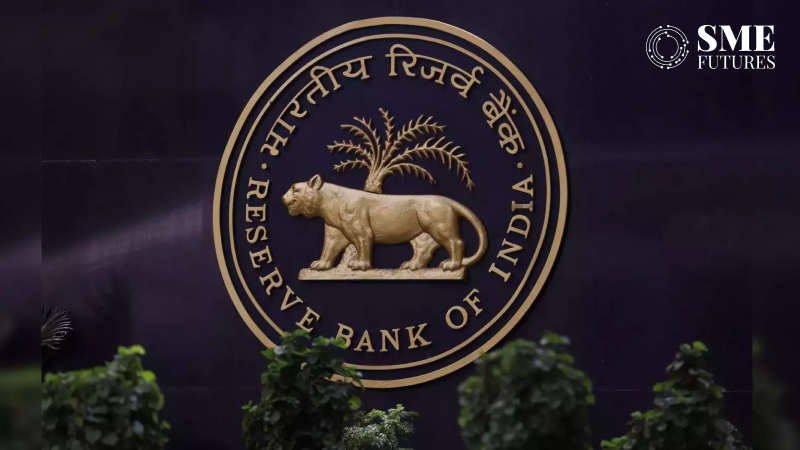One Pill, One Quality, One Price: Revolutionising healthcare through equitable pricing
The “One Drug, One Quality, One Price” model has sparked an intense debate. The government must consider all views and opinions as the arguments continue about how logical and effective this model would be if it were to be implemented fully.
Neil Banerjee September 18, 2023

MORE IN Focus
International oil trade at stake as Iran-Israel tensions seem unending
It’s rush hour for gold in 2024, and India inc is riding new trends
IPL’s impact on hospitality: Boosting tourism, hotel bookings, and revenue surge
Will 45-day payment rule revolutionise MSME support?
The future of digital banking: Lessons from Paytm Payments Bank’s regulatory hurdles
In the ever-evolving healthcare sector, the intricate interplay between drug prices, patient care, and industry sustainability has sparked a wide-ranging debate amongst its stakeholders. The Indian Medical Association’s (IMA) resounding call for the “One Drug, One Quality, One Price” model has brought the industry to a critical juncture, demanding a delicate balance between affordability, quality assurance, and operational feasibility. As per the new National Medical Commission (NMC) guidelines, the decision has been put on hold for now, but the experts continue to argue about how logical and effective it would be if it were to come into effect.
Navigating the challenges of varying drug prices

“The challenge posed by varying drug prices is profound,” acknowledges Dr. Vikas Chopra, a senior consultant interventional cardiologist. He elucidates its potential impact on clinical decisions, underlining that such disparities can occasionally jeopardise patient care.
Dr. Shrey Srivastav, a general physician also casts light on the tightrope that healthcare providers must tread. “Striking a balance between cost considerations and patient well-being is not a mere choice, but a resolute ethical obligation,” he asserts.
What’s the industry’s response?
Healthcare facilities like PositiveGems have orchestrated some strategic and innovative moves to address the challenge of varying drug prices for medicines with similar chemical compositions.
Gagan Manchanda, Co-Founder, PositiveGems, says, “We employ a range of strategies, including brand differentiation, clinical trials, market segmentation, and diverse pricing approaches. This approach not only adeptly tackles the complexities of fluctuating prices but also upholds quality and patient welfare.”
By staying attuned to market trends and regulatory changes, healthcare facilities can remain proactive in refining their strategies and maintaining their positions at the forefront of innovative and affordable healthcare solutions.
Dynamics of healthcare facilities
Healthcare establishments such as LordsMed are deftly navigating the complexities of ushering in a uniform pricing model. The latent advantages of such an approach range from supply chain predictability to operational streamlining. However, they are not oblivious to the potential complexities and challenges that are inherent in this transition.
Keeping the prices consistent for medical services has benefits. It helps control the supply of essential medical provisions and ensures smooth operations. This is because it simplifies billing, reveals the cost of items, and saves time for both the workers and the patients. But transitioning to this pricing model is challenging. It requires a careful consideration of market dynamics and financial resources.
What strategies could be used for equitable pricing?
Manav Teli, Managing Director, LordsMed, says, “The companies need to value their customers’ preferences and loyalty.” The challenge is to ensure that the transition to a uniform pricing model doesn’t erode customer loyalty while striving for equitable pricing. “Transparent communication, emphasising the quality of our products, coupled with judicious incentives, will play a cardinal role in this transition,” he further expounds.
Teli advocates clear communication, highlighting product quality, and strategic incentives to successfully manage this transition.
The promise of uniform pricing for accessibility

The “One Drug, One Quality, One Price” model could be the potential harbinger of transformative change and alter healthcare accessibility and affordability forever by offering a standardised pricing matrix. Here are some of the benefits that will accrue from it:
Price Parity: According to Teli, the uniform pricing mandated by the model ensures that patients pay the same price for medications irrespective of brands, eliminating the price variations that often hinder affordability.
Affordable Access: Patients gain access to high-quality treatments at a consistent price point, which eliminates the financial burden caused by disparate pricing, particularly for those undergoing long term treatments for chronic diseases.
Enhanced Competition: The model fosters a competitive environment based on product quality rather than pricing strategies, encouraging companies to focus on producing effective and safe medications.
Balancing transition to uniform pricing
As the industry stands at the precipice of a paradigm shift, concerns have arisen about orchestrating a seamless transition to the uniform pricing model. “A tapestry of measures can be woven to secure a gradual transition,” contends Teli. These measures would encompass the phased implementation of this model, robust quality assurance frameworks, and assuring that the financial architecture is sturdy enough to absorb the potential fiscal tremors that this may cause.
“The change should happen slowly and be very clear,” says Dr. Nidhi Mehta, a pharmacological luminary. She underscores the importance of allowing stakeholders a clear view of the road ahead, coupled with patient education regarding the virtues of this model.
Experts propose a gradual approach; ensuring that the products meet high standards while having financial plans in place. Another specialist suggests a gradual, clear change, allowing everyone the requisite time to grasp and appreciate the new approach.
Challenges and opportunities in advocating for change

The “One Drug, One Quality, One Price” model engenders a tapestry of prospects and concerns as the healthcare industry prepares to implement this paradigm shift.
“We acknowledge both the crescendos and the diminuendos in advocating and implementing this model,” states Teli. Its potential positive outcomes range from a bolstered market growth to access to a patient galaxy. Yet, the challenges of orchestrating the right balance between quality assurance, industry resistance, and fiscal implications must be addressed collectively.
As various experts discuss and argue about the “One Drug, One Quality, One Price” model – most of them tend to agree on one point- the heart of the model with its goal to provide fair access to healthcare tools and equipment, is in the right place. Such a transformation demands collaboration, elucidation, and a shared pact to promote the common good.
Paving the path for equitable healthcare
As the healthcare industry navigates uncharted waters, the “One Drug, One Quality, One Price” model has emerged as a North Star. By adhering to its standard pricing paradigm, the industry will evolve into an inclusive healthcare universe transcending economic barriers.
“As we march to the cadence of pricing aligned with accessibility and quality assurance, the ‘One Drug, One Quality, One Price’ model will scribe a transformative verse,” says Teli.
Thus, through collaboration, transparency, innovation, and unwavering devotion to a patient-centric ethos, the healthcare industry is poised to commence a new epoch in healthcare. And finding the perfect balance between affordability and quality will be an important milestone on the road to make the best healthcare accessible to all.











